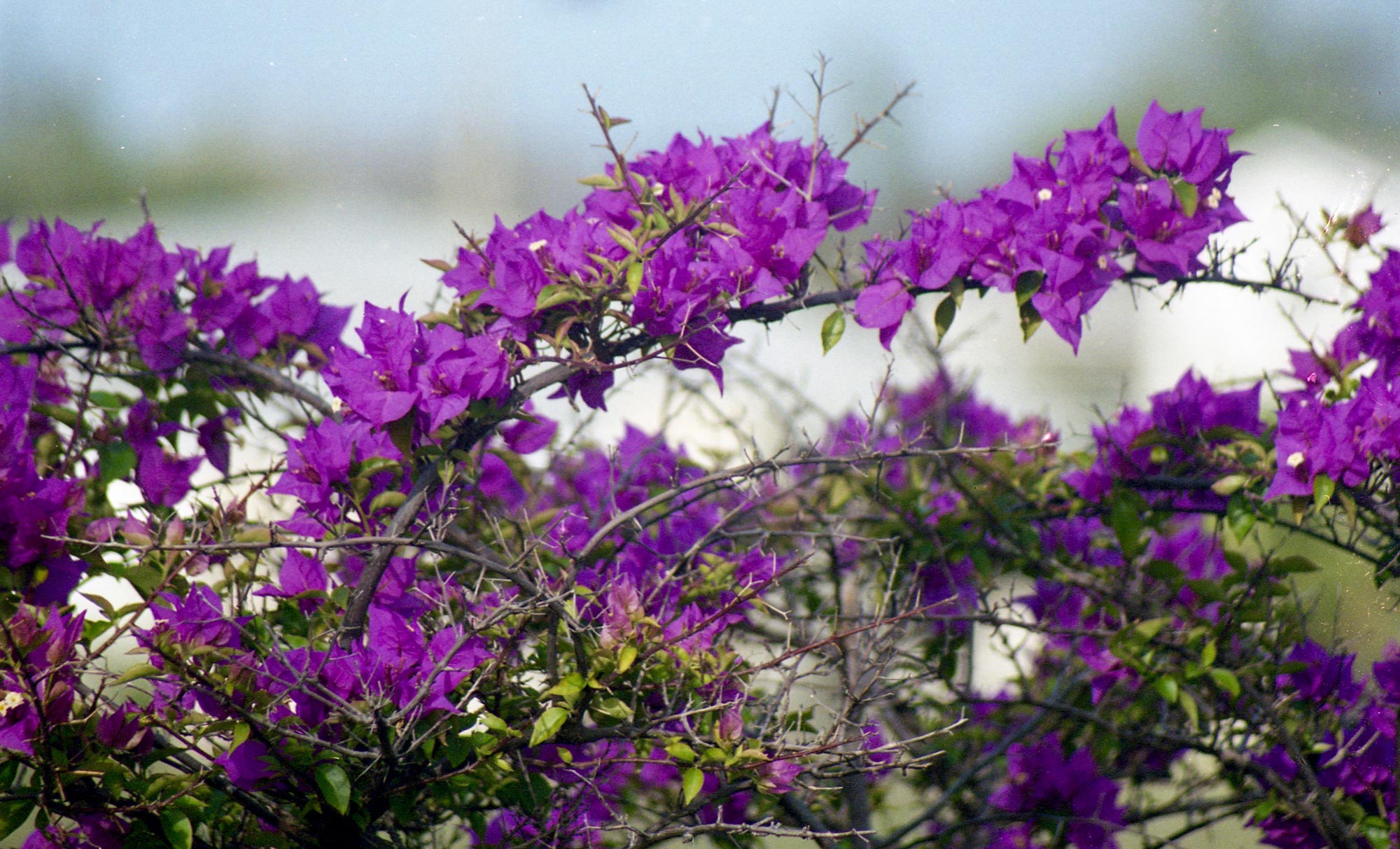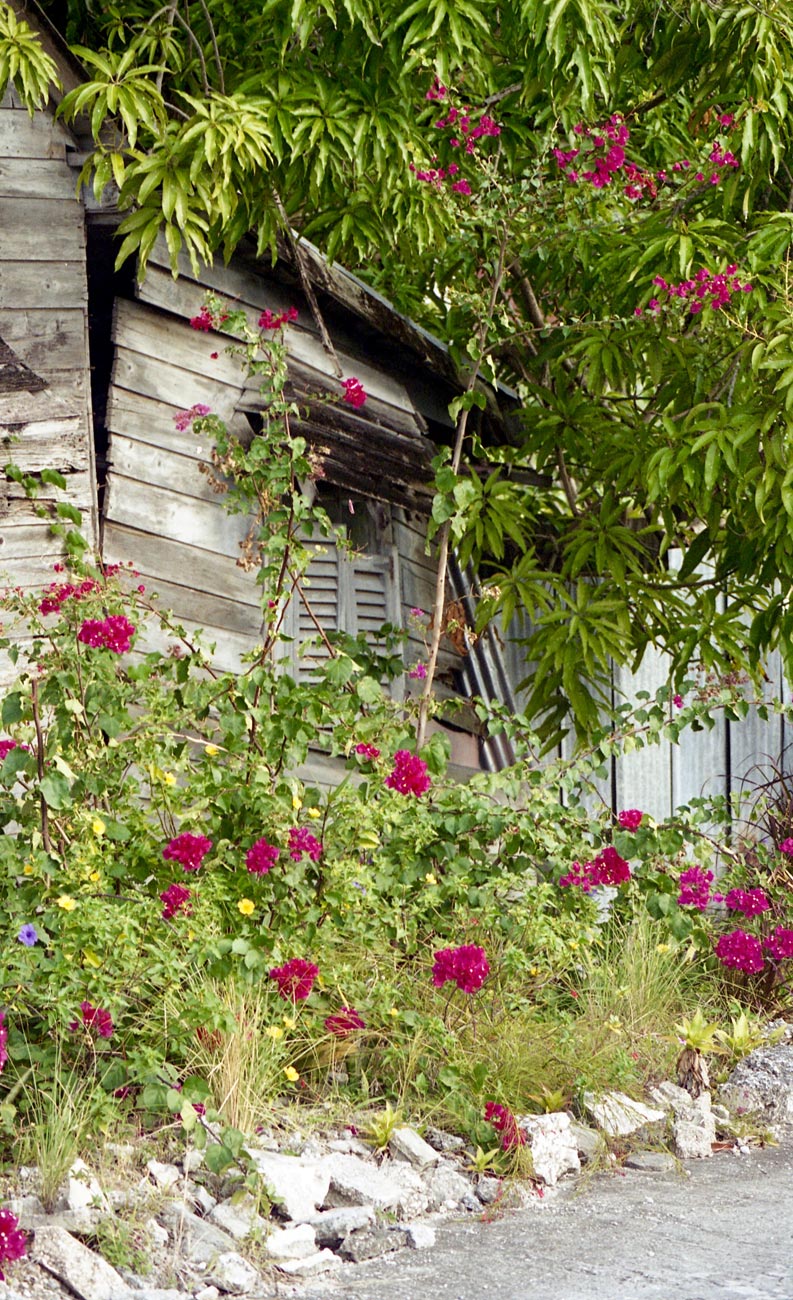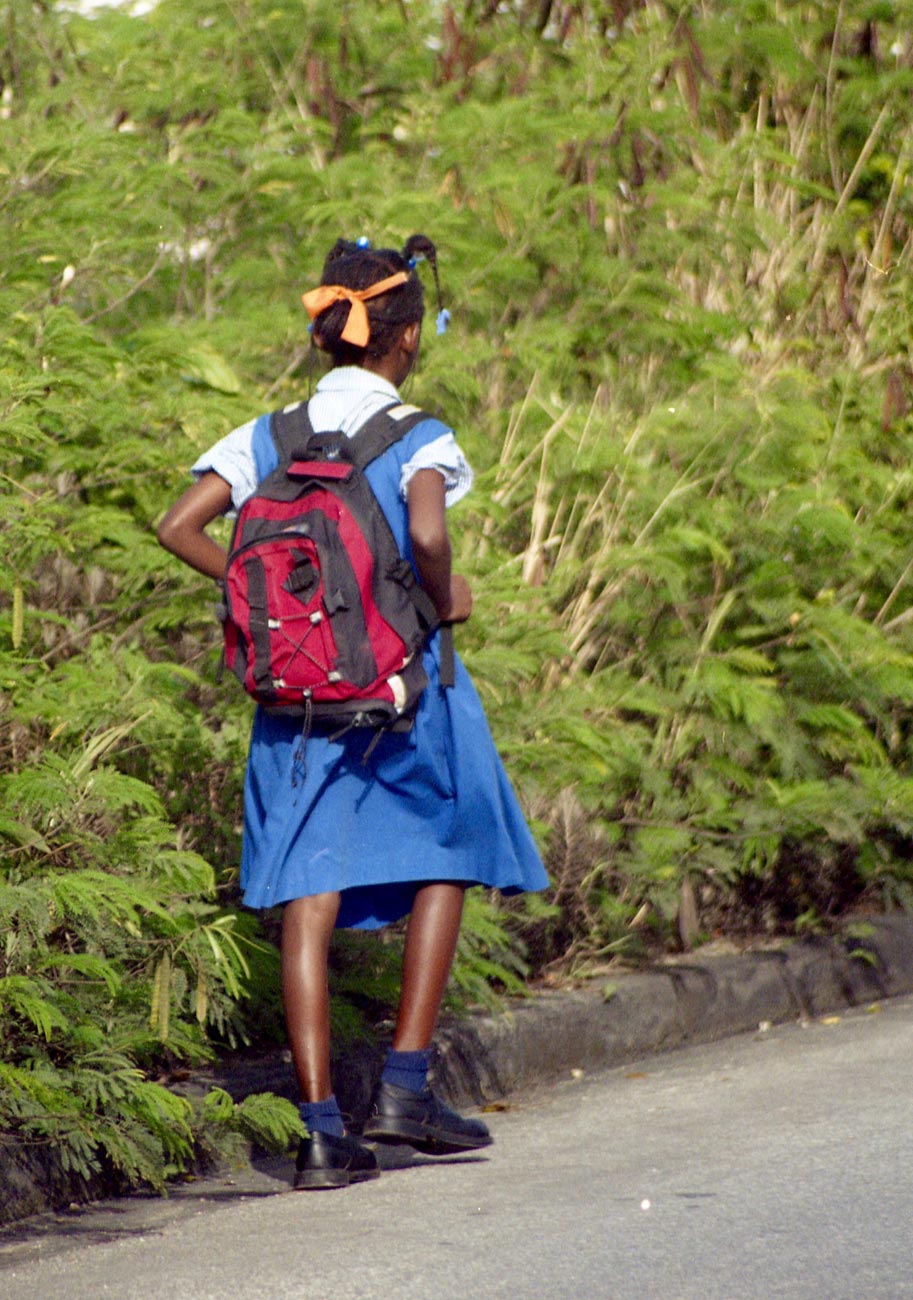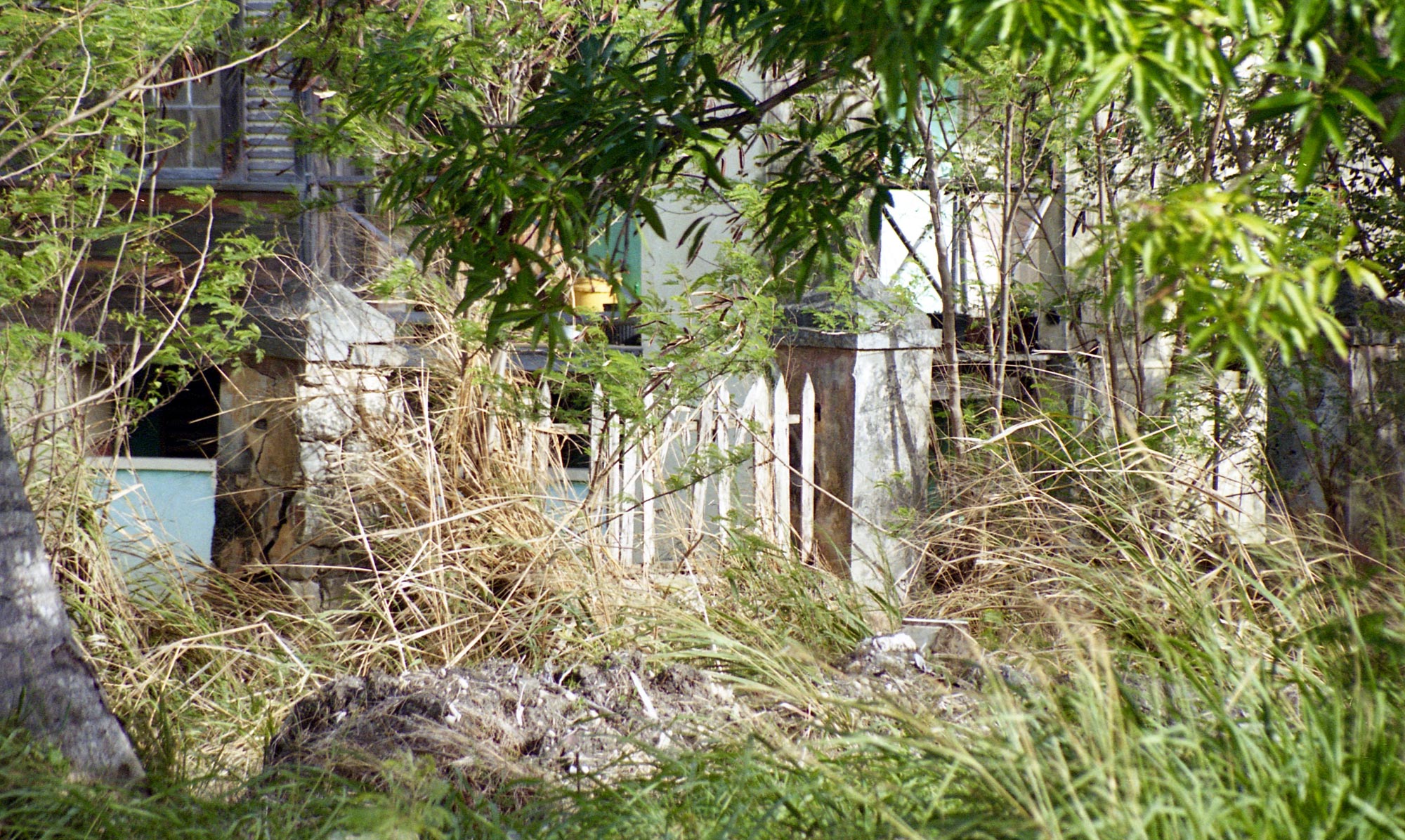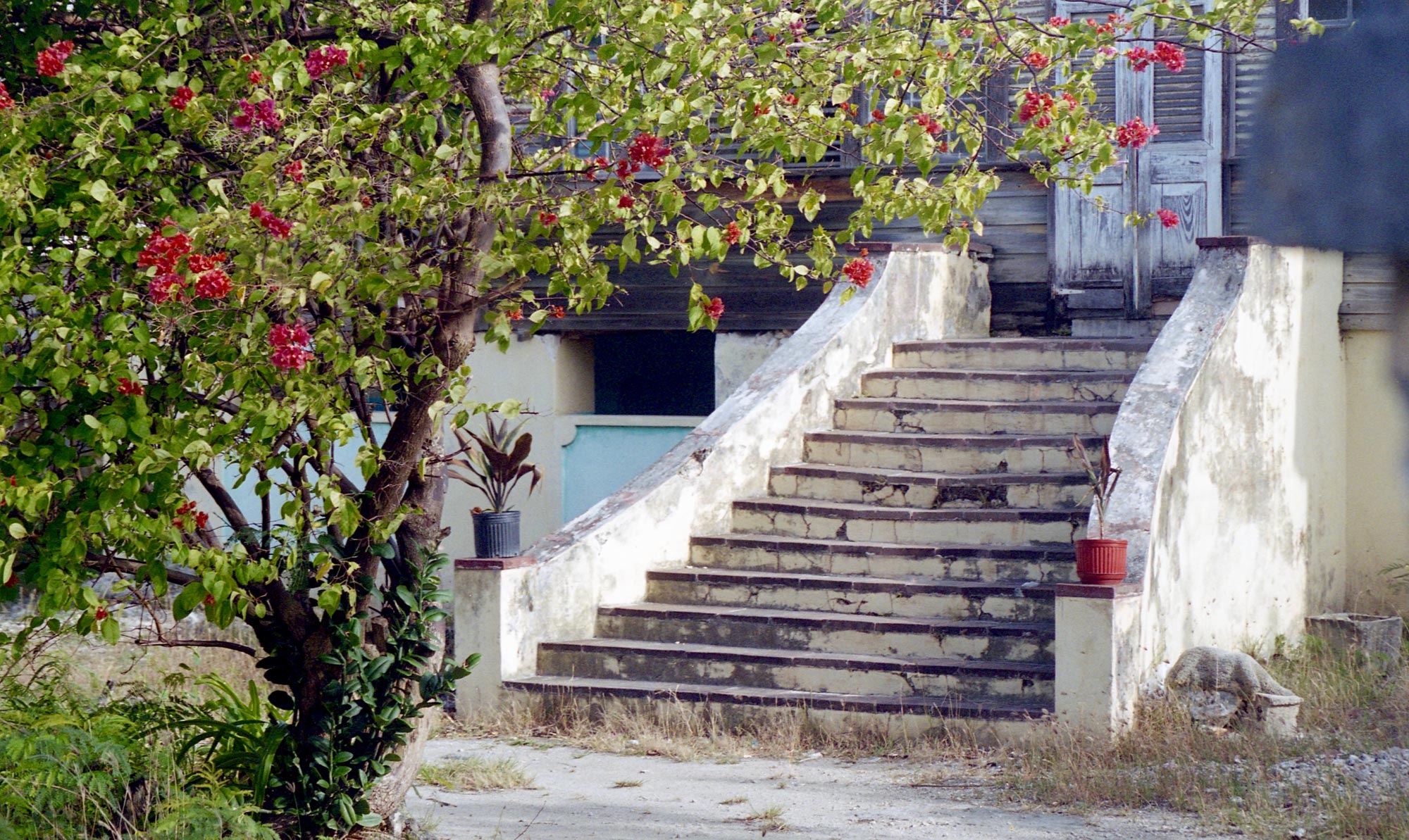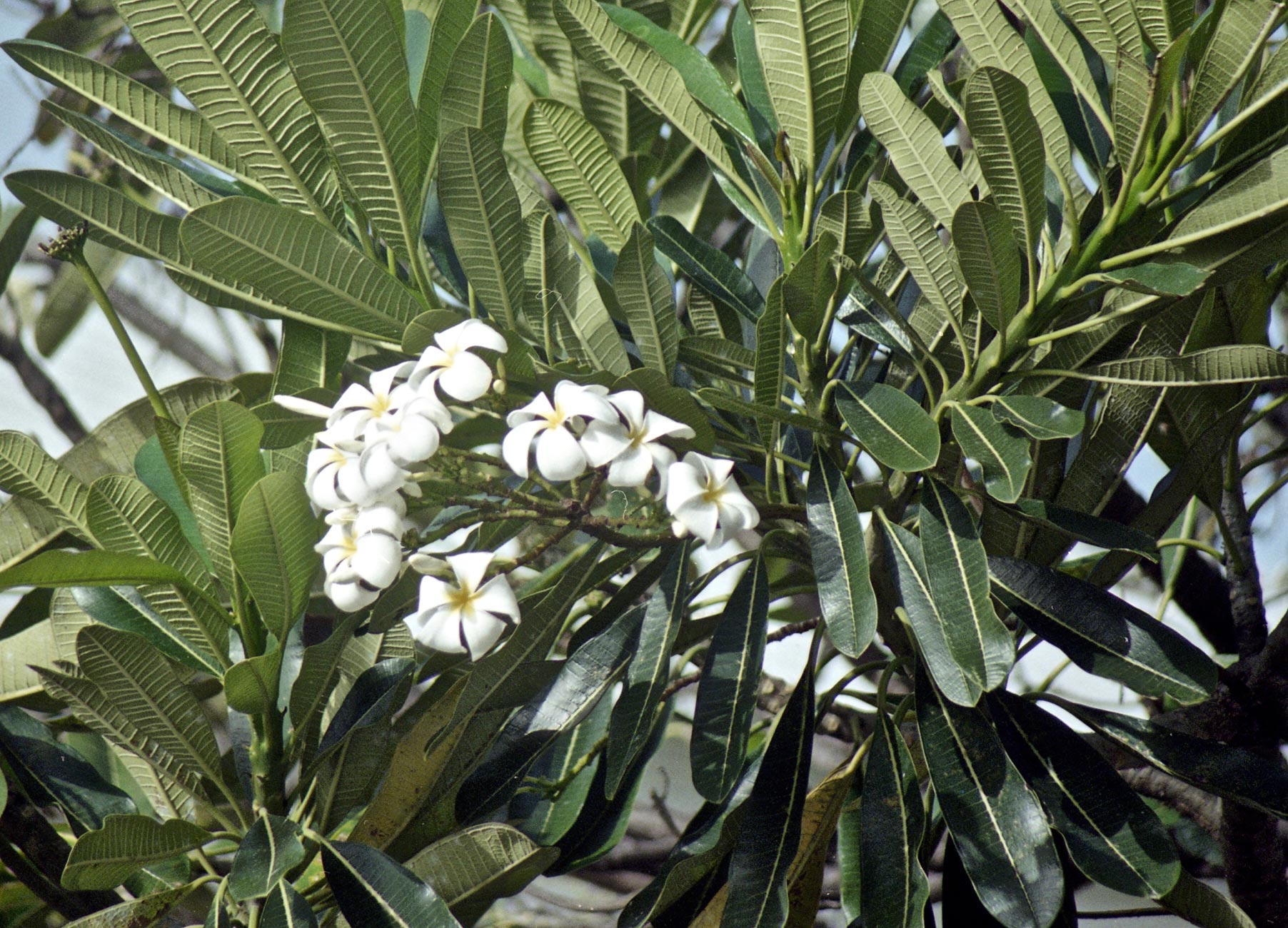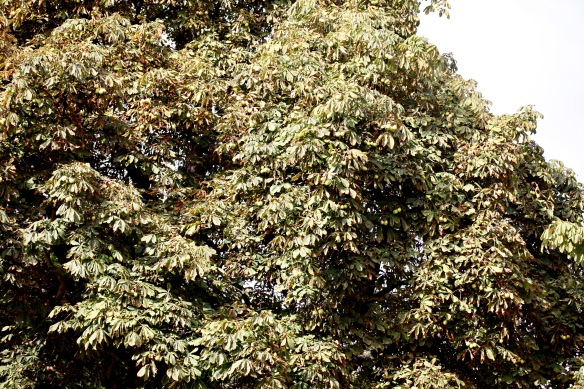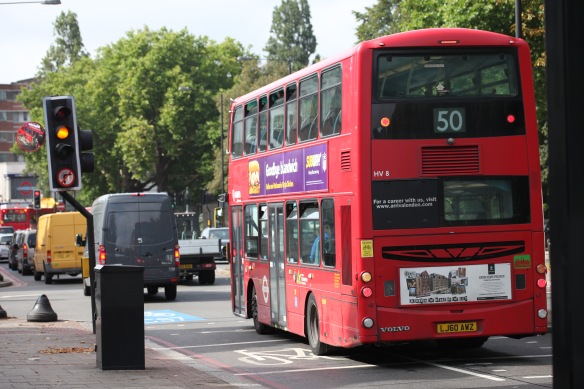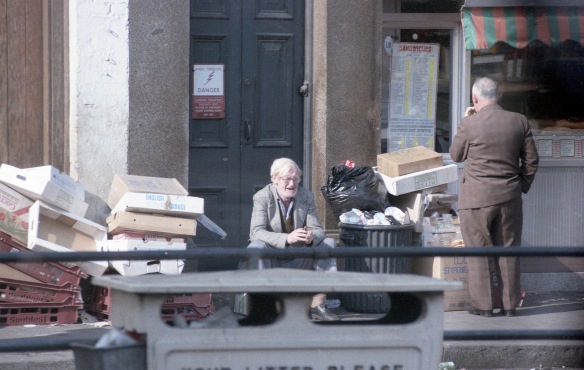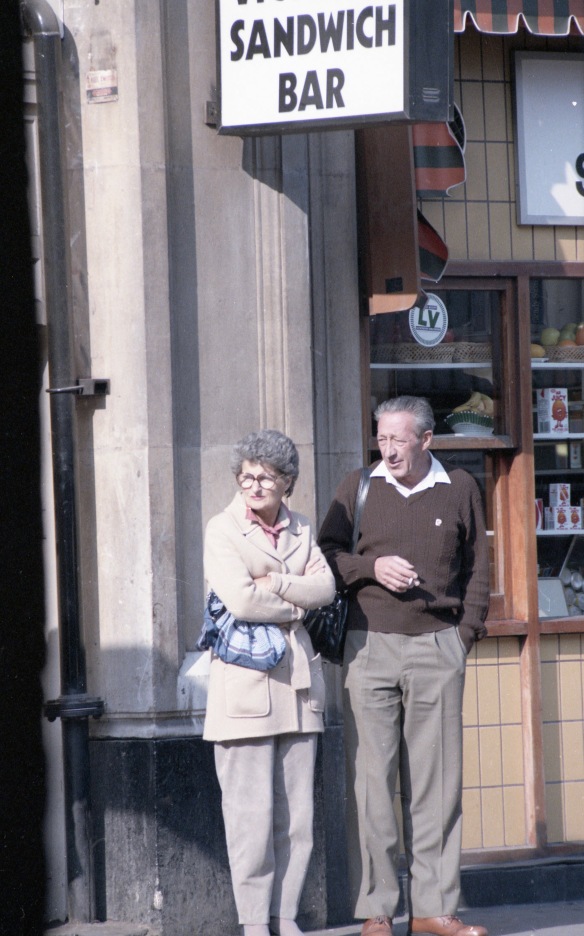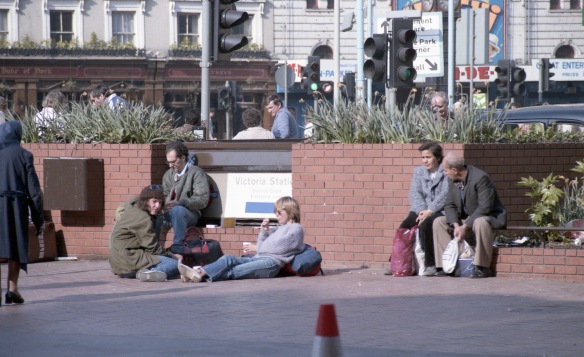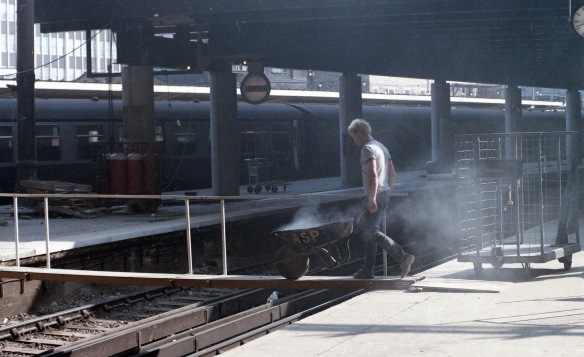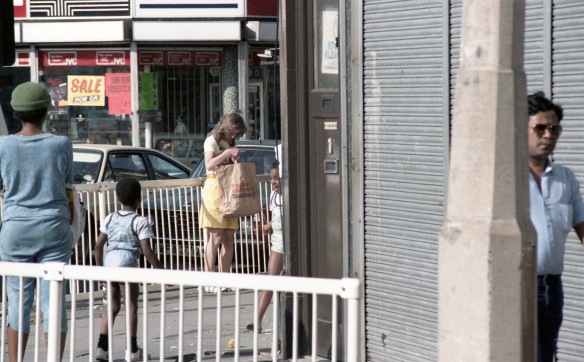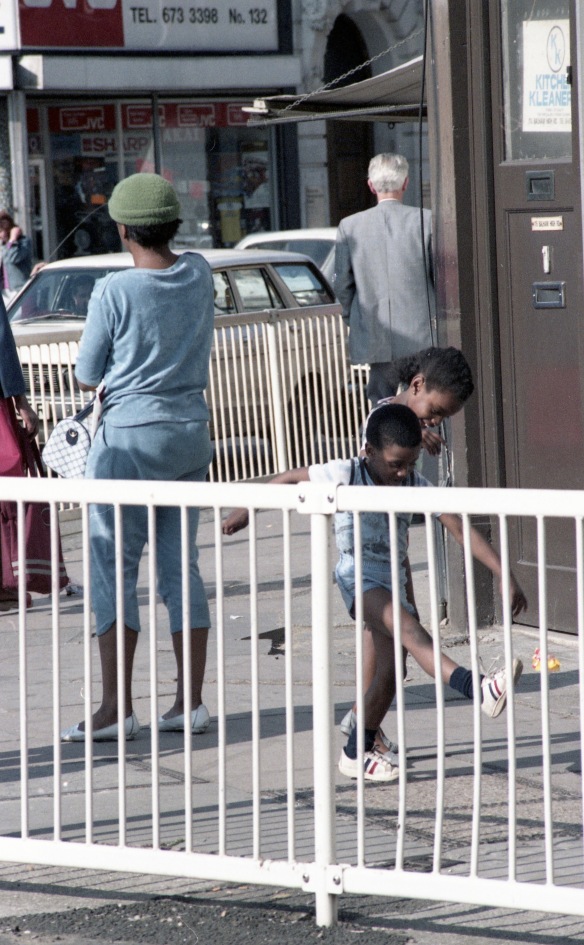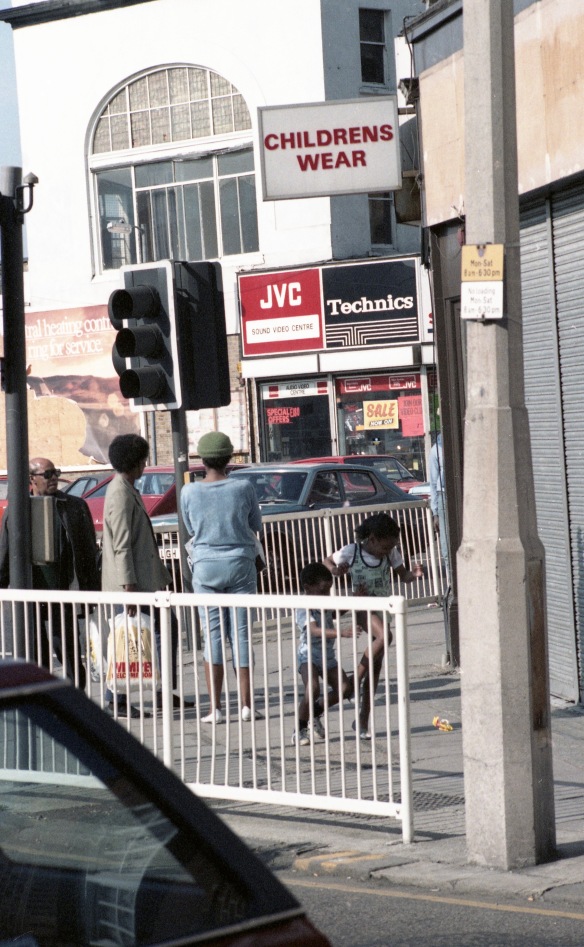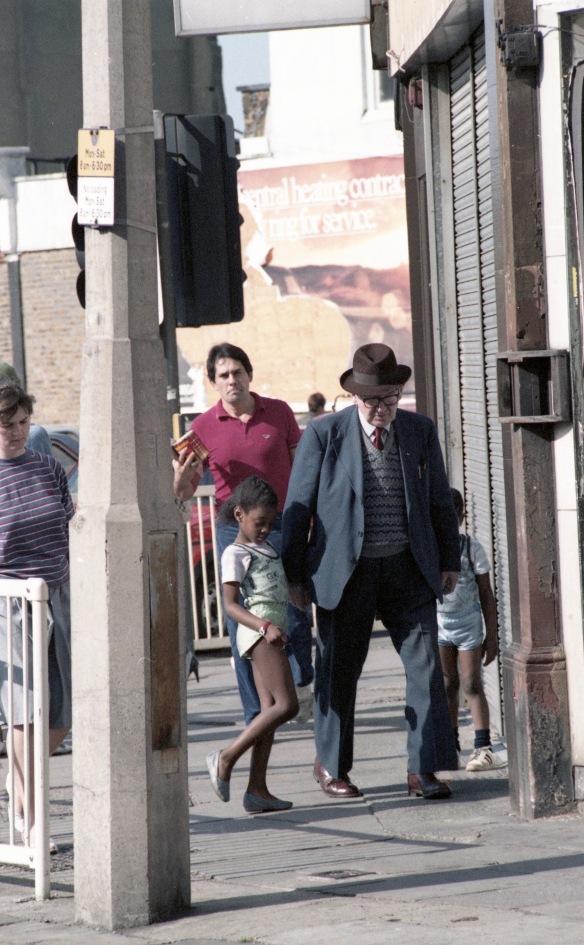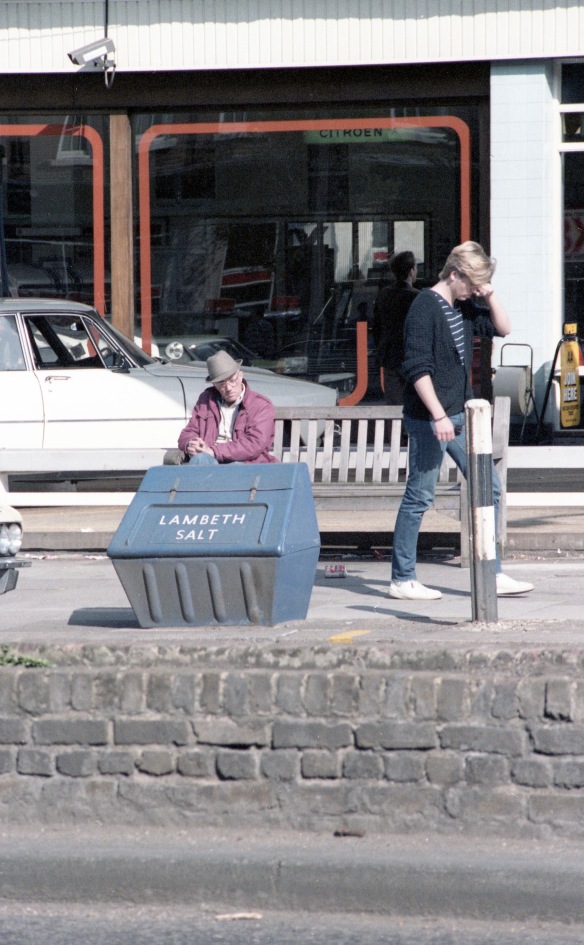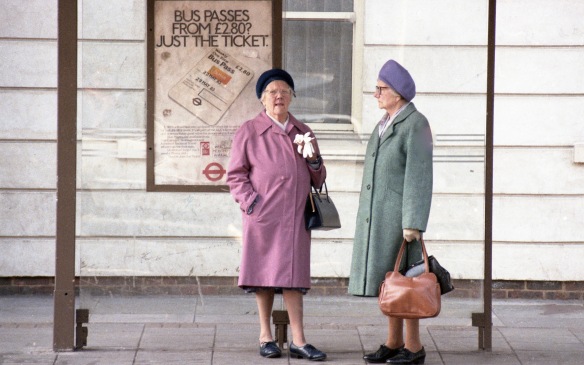Today we are battling even greater global problems with air pollution than that of the smog Chris and I experienced in 1952. Smog is a term coined by compacting elided versions of ‘smoke’ and ‘fog’. One nickname for London is ‘The Smoke. The capital in those days was frequently visited by fog exacerbated by smoke from the burning of coal. It had been a problem in industrial towns since the previous century. The return home from school in December 1952 was expected to be in the dark. Normally, when we got off the trolleybus at Arterberry Road, even at night time, we could see the pillarbox at the corner of Stanton Road in which we lived, and the street lamps rendered the crossing as bright as daylight. Not so, soon after 4 p.m., when the great smog hit ‘The Great Wen’, another name for London. Imagine a gas lamp in a Victorian alleyway, glowing a dull, weak, egg-yolk hue, its halo vanishing into the darkness, and offering no practical illumination. This is what the street lamps of Wimbledon, and the headlights of passing cars looked like for a week of winter evenings. They had no impact on the pea souper that penetrated our lungs and our living rooms. Alighting from our bus, Dad having come to meet us, we felt our way along fences to the corner of Arterberry, peered into the depths of Worple Road, and hoped the lack of feeble car lights would persist until we tripped over the kerb and into Stanton Road on the other side. We then had to progress down to the dog-leg around which, over the road, lay our home. Fortunately there were very few cars on these roads at that time. Those that did emerge, crawled along, their drivers blinking into the gloom. I really don’t know how the bus drivers managed.
(https://www.streathamsociety.org.uk/blog/the-great-smog-of-1952)
I do not exaggerate these conditions. I see the all-enveloping obscurity blanket still. In 1956 the Clean Air Act, which introduced smokeless zones, came into effect. It was a direct result of the virtual blackout of December 1952.
It was interesting to find corroboration of my own memory in
‘Great Smog of London, lethal smog that covered the city of London for five days (December 5–9) in 1952, caused by a combination of industrial pollution and high-pressure weather conditions. This combination of smoke and fog brought the city to a near standstill and resulted in thousands of deaths. Its consequences prompted the passing of the Clean Air Act four years later, which marked a turning point in the history of environmentalism.
The phenomenon of “London fog” long predated the crisis of the early 1950s. Known as “pea-soupers” for their dense, yellow appearance, such all-encompassing fogs had became a hallmark of London by the 19th century. But polluted fog was an issue in London as early as the 13th century, due to the burning of coal, and the situation only worsened as the city continued to expand. Complaints about smoke and pollution increased in the 1600s, when ultimately ineffective legislation was passed under King James I to restrict coal burning. Rapidly increasing industrialization that began in the late 1700s made conditions even worse.
Air pollution reached a crisis in the 19th century with the spread of the Industrial Revolution and the rapid growth of the metropolis. The increase of domestic fires and factory furnaces meant that polluted emissions surged considerably. It was at this time that the fog-laden atmosphere of London portrayed vividly in the novels of Charles Dickens and Arthur Conan Doyle emerged. The fogs of London could last a week, and fog-related deaths were reported on gravestones in the early 19th century. Despite the deterioration of public health, little was done to check the smog, given the plethora of jobs that new industry provided and the comforts afforded by domestic coal fires.
The Great Smog of 1952 was a pea-souper of unprecedented severity, induced by both weather and pollution. On the whole, during the 20th century, the fogs of London had become more infrequent, as factories began to migrate outside the city. However, on December 5, an anticyclone settled over London, a high-pressure weather system that caused an inversion whereby cold air was trapped below warm air higher up. Consequently, the emissions of factories and domestic fires could not be released into the atmosphere and remained trapped near ground level. The result was the worst pollution-based fog in the city’s history.
Visibility was so impaired in some parts of London that pedestrians were unable to see their own feet. Aside from the Underground, transportation was severely restricted. Ambulance services suffered, leaving people to find their own way to hospitals in the smog. Many people simply abandoned their cars on the road. Indoor plays and concerts were cancelled as audiences were unable to see the stage, and crime on the streets increased. There was a spike in deaths and hospitalizations relating to pneumonia and bronchitis, and herds of cattle in Smithfield reportedly choked to death. Though the fog lasted five days, finally lifting on December 9, its severity was not fully appreciated until the registrar general published the number of fatalities a few weeks later, which amounted to about 4,000. The effects of the smog were long-lasting, however, and present-day estimates rank the number of deaths to have been about 12,000.
After the events of 1952, the seriousness of London’s air pollution became undeniable. Slow to act at first, the British government ultimately passed the Clean Air Act four years later, in 1956, as a direct response to the lethal fog. The act established smoke-free areas throughout the city and restricted the burning of coal in domestic fires as well as in industrial furnaces. Moreover, homeowners were offered grants that would allow them to switch to different heating sources, such as oil, natural gas, and electricity. Though change was gradual and another smog crisis occurred in 1962, the Clean Air Act is generally considered a major event in the history of environmentalism, and it helped improve public health in Britain.
(https://www.britannica.com/event/Great-Smog-of-London)


